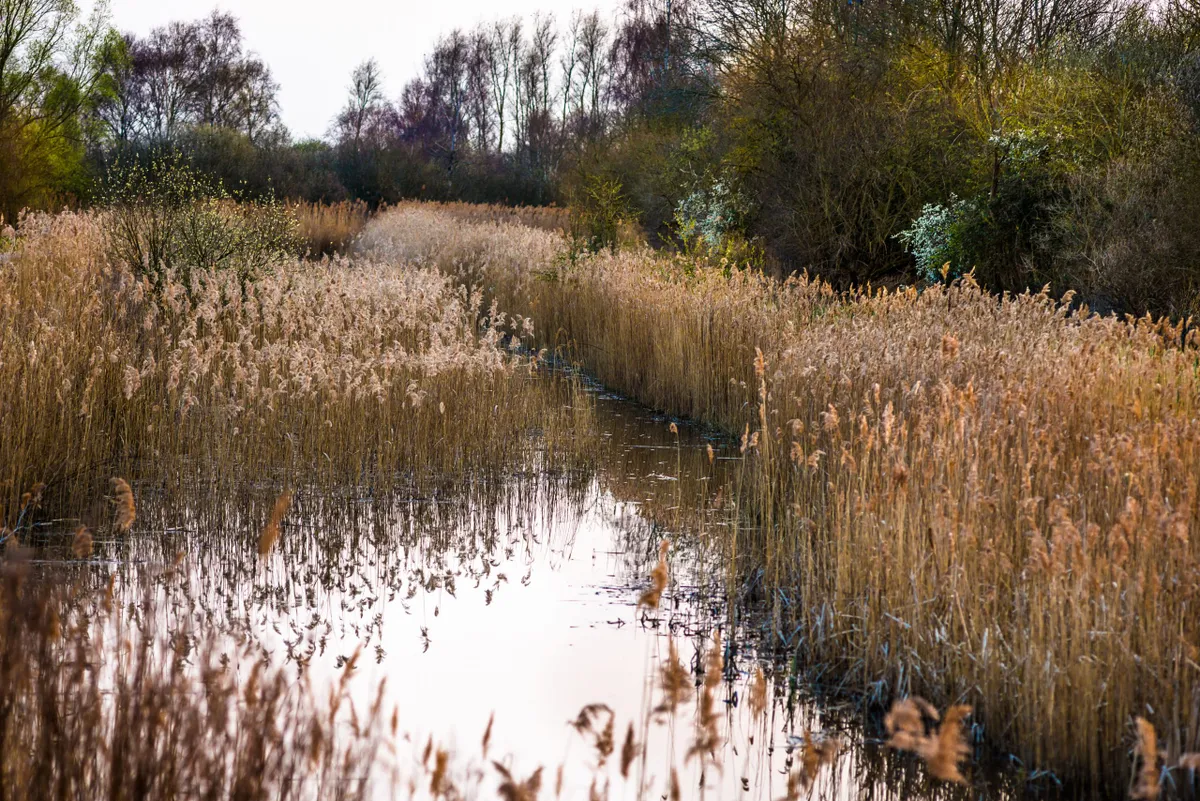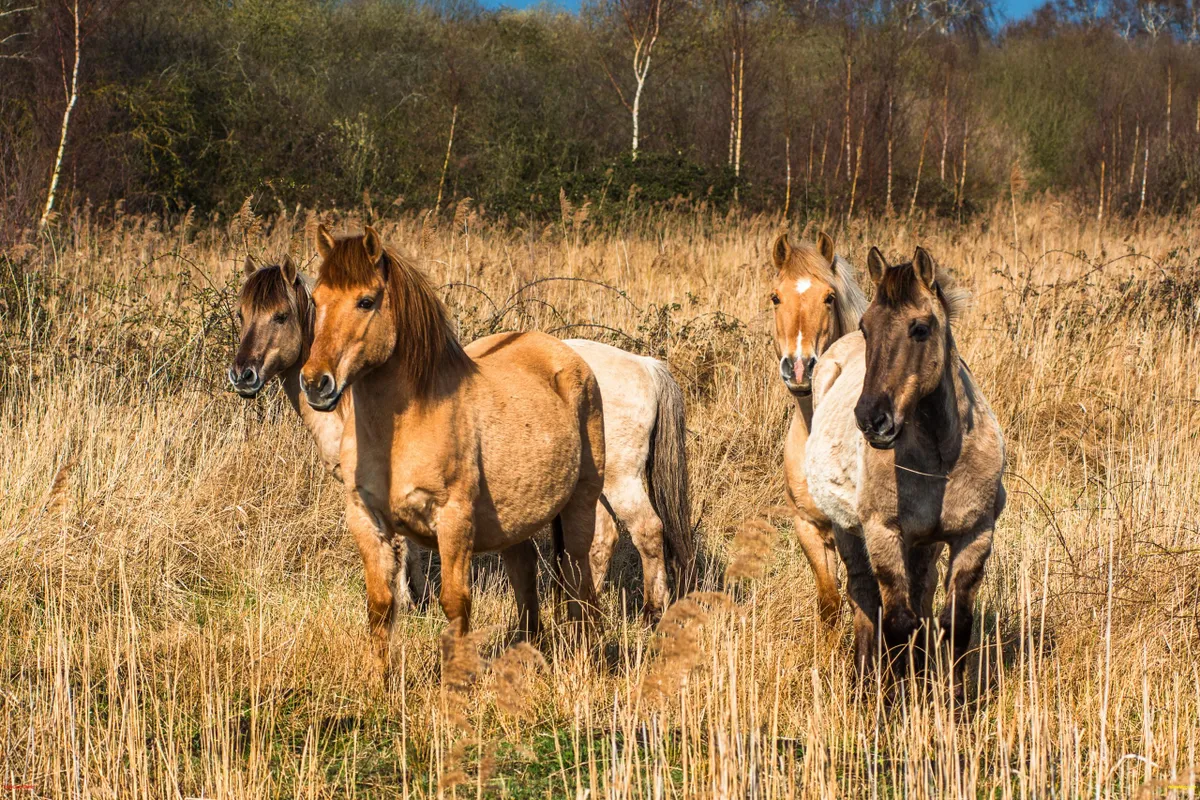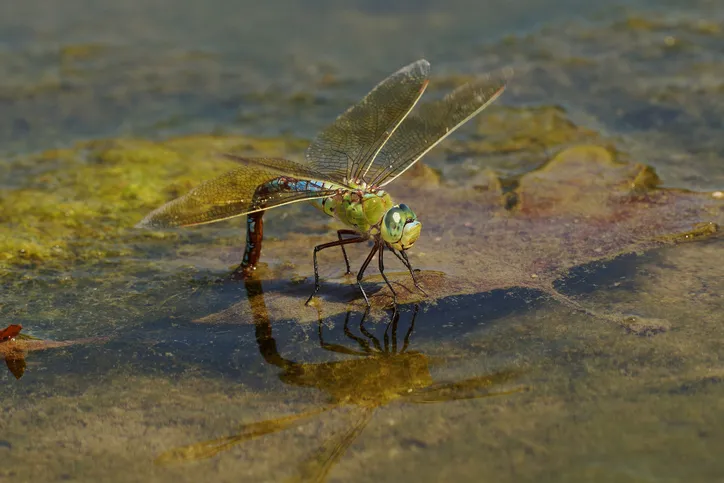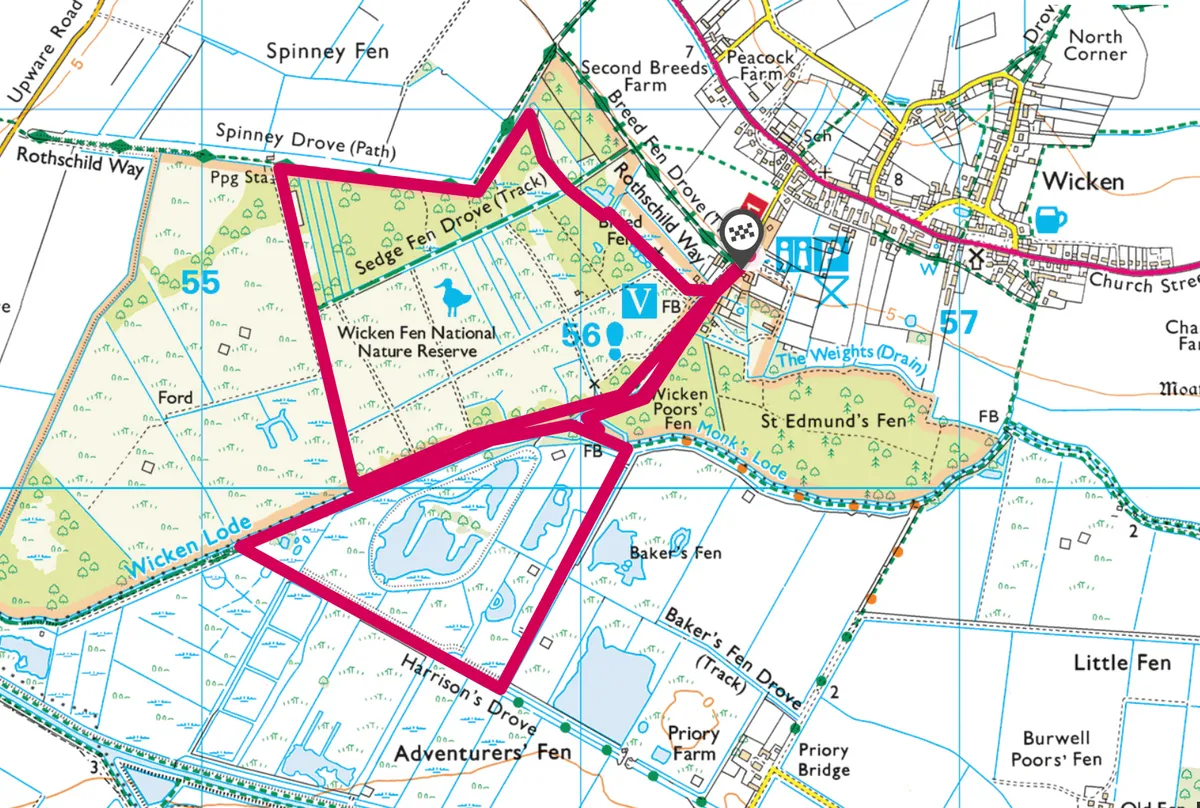One of Britain’s oldest and most diverse nature reserves, Wicken Fen is made up of woodlands, wet grasslands, marshlands, bogs, meadows and shallow ponds – all of which burst with wildlife.
At its north-eastern limit, a restored historic windpump towers over the reedbeds, pumping water on to the fens.

Pause to absorb the views, which stretch for miles across acres of marshes and wetlands, surrounded by scrub, fen plants and trees, before exploring the reserve on a series of wooden walkways and waterside paths.
Wildlife corridors
More than 9,000 species have been recorded at Wicken Fen, including rare butterflies, threatened birds such as bitterns and cuckoos, and scarce orchids. Lily pads float on the water, frogs come and go, and you might see water voles, grass snakes and newts. Wigeon, winter thrushes, hen harriers and short-eared owls can be sighted in winter, while reed warblers arrive in April to breed among the reedbeds.

The nature reserve is also home to 20 species of butterfly and 22 species of dragonfly and damselfly, including the rare Norfolk hawker and the willow emerald damselfly, a species recorded at Wicken Fen for the first time in 2016. Threatened Eurasian cranes started breeding here in 2019.
If you’d rather not walk, an electric boat (operating from March to October) takes visitors along Wicken Lode, a man-made watercourse where swans breed, fish are abundant and hundreds of dragonflies hover over the water.

The future of Wicken Fen
Acquired in 1899 and since expanded, Wicken Fen was the first nature reserve to be owned by the National Trust. This vital wetland area is pivotal in an ambitious plan to connect habitats across different landscapes, creating wildlife corridors that will enable multiple species to thrive. The trust has identified 53 square kilometres of land that could form part of the conservation project and have approached landowners about collaborating to manage the land for nature, protecting it against habitat destruction, climate change and intensive farming.
Wicken Fen has a number of short walks, including the Adventurers’ Trail and the Boardwalk Trail, and miles of tracks around the reserve, as well as a visitor centre and café for hungry hikers. Our walk below offers a longer alternative.
Wicken Fen walk
4.5 miles | 2.5 hours | easy
1. Waterfowl watch
From the car park, head south-west along Lode Lane. Opposite whitewashed Fen Cottage on your left, turn right off the lane to reach the visitor centre. Continue along a boardwalk on the right bank of a dyke, past a wind pump on the opposite bank.
After 200m take a detour to the Roger Clarke Hide, a good place to see waterfowl. Cross the footbridge to the other bank, walk north-west (right) on the path. Go straight ahead at a junction.
After 250m, turn sharp left along Mitchell's Drove, named after the first full-time warden of Wicken Fen. Continue along the wide track as the path bears right, ignoring paths to the left. Look out for damselflies and grass snakes in the drainage dyke.
2. Konik ponies and warblers
At a post marked 17, turn left. You will pass a tower hide to your left overlooking Verrall's Fen, a good place to spot Konik ponies. Ignore a path to the left and continue ahead, passing Sedge Fen. Thought to be the last 0.1 percent of undrained fenland in Britain, it supports a variety of insects and birds such as reed, sedge and grasshopper warblers.
Turn left along Wicken Lode, keeping it to your right. On the left, climb steps to a tower hide overlooking The Mere, a series of pools across the lode - a good place to scan for marsh harrier and hobby. On the left, climb steps to a tower hide overlooking The Mere, a series of pools across the lode, a good place to scan for marsh harrier and hobby.
Keep ahead on the path to reach the visitor centre. Here, cross a bridge and turn right to walk along the southern side of Wicken Lode.
3. Hiding out
After 400m, follow the path sharp left and cross a footbridge. Turn left and walk alongside Monk's Lode for 100m. Turn right and go through two gates, then walk along a raised bank called Moore's Drove, checking for Cetti's warblers. To the left is Baker Fen, a mix of grasses, reeds and shallow water, a good spot for waders.
At the end of the bank, drop down to the left and turn right on a wide path called Harrison's Drove. To reach a hide from where you might observe waders, ducks and marsh harriers, walk left for 125m. Return to Harrison's Drove and continue northwest, with Adventurers Fen on your left. Look for Konik ponies and roe deer.
At the end of the drove, climb a grassy bank to Wicken Lode. Turn right and follow the lode, passing West Mere Hide and East Mere Hide on the right. Cross the bridge over Monk's Lode, turn left and follow the path as it bends right, past the visitor centre and back to the car park.
Wicken Fen map
Wicken Fen walking route and map


